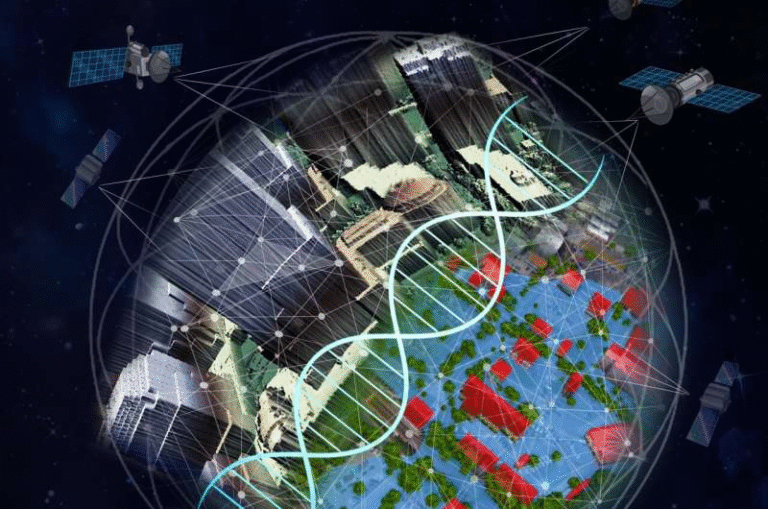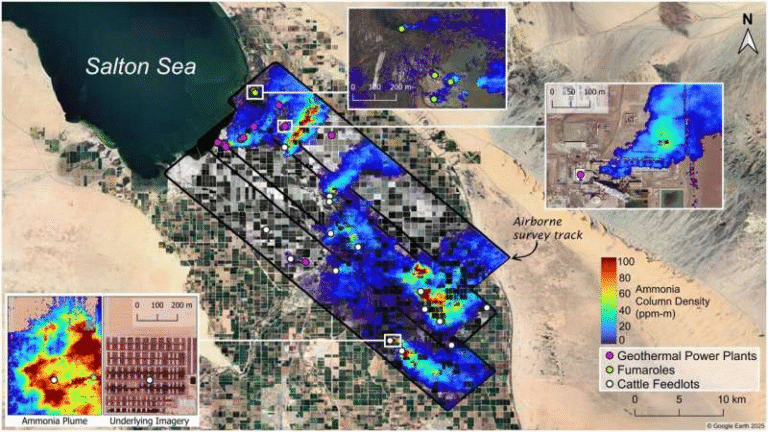Understanding Anticipatory Action for Health in a Changing Climate

Climate change isn’t just about rising sea levels or melting glaciers anymore—it’s now deeply tied to human health. From heatwaves and floods to the spread of vector-borne diseases and food insecurity, global health systems are feeling the strain. A new report from Tufts University’s Feinstein International Center takes a comprehensive look at how humanitarian and health organizations are responding through something called anticipatory action—a proactive approach that acts before disaster strikes.
This global study, titled “Landscape of Anticipatory Action for Health in a Changing Climate”, offers a deep dive into how this approach is being implemented worldwide, what challenges it faces, and how it could be improved. The researchers analyzed 119 official anticipatory action frameworks operating in 43 countries, reviewed 49 summaries of those frameworks from organizations like the Red Cross Red Crescent Movement and United Nations agencies, and conducted 66 in-depth interviews with professionals from Bangladesh, Colombia, the Philippines, and Uganda, as well as experts working at the global level.
Let’s unpack the key findings, frameworks, and implications from this important study, and also explore what anticipatory action really means for the future of public health in a warming world.
What Is Anticipatory Action (AA)?
Anticipatory Action (AA) refers to actions triggered before a disaster or crisis happens, based on reliable forecasts or warnings. Instead of waiting for an emergency to occur, organizations prepare and respond in advance—reducing harm, saving costs, and strengthening community resilience.
This approach has gained momentum in the humanitarian field, especially as extreme weather events become more frequent and severe. For example, when a forecast predicts heavy rainfall and flooding, an anticipatory framework might trigger pre-positioning of medical supplies, mobilization of health workers, or distribution of clean water to prevent outbreaks of waterborne diseases.
The idea is simple but powerful: don’t wait for the worst—act before it happens.
The Study in Detail
The Tufts researchers reviewed all 49 published summaries of existing anticipatory action frameworks and mapped out 119 frameworks across 43 countries. These are initiatives designed by international agencies, governments, and NGOs to reduce the health and humanitarian impacts of disasters.
They also conducted 66 interviews with people actively working in the field of anticipatory action and health. These interviews spanned four key countries—Bangladesh, Colombia, the Philippines, and Uganda—each chosen for their exposure to different climate-related hazards and their ongoing involvement in early warning and early action programs.
The study reveals that two main approaches dominate the field:
- Hazard-driven anticipatory action, where interventions are triggered by forecasts of physical hazards like storms, floods, or heatwaves.
- Disease-driven anticipatory action, where triggers are based on early warning signals of potential disease outbreaks linked to climate conditions.
Out of the 49 frameworks studied, nearly all (48) were hazard-driven, while very few were built around disease prediction and prevention. That imbalance, the report argues, shows how much work remains to better integrate health data into climate-related early action systems.
Hazard-Driven vs. Disease-Driven Action
In hazard-driven frameworks, the starting point is a predicted hazard. For example, if a severe storm is forecasted in Bangladesh, government and humanitarian agencies might launch a series of preventive actions: deploying medical teams, setting up temporary shelters, stocking clinics, and distributing emergency kits.
On the other hand, disease-driven frameworks begin with a potential health outcome—like a dengue or cholera outbreak. Here, data from disease surveillance systems, weather forecasts, and environmental models combine to predict where and when an outbreak might occur. Actions are then triggered to prevent or reduce disease transmission—such as fumigating mosquito breeding sites or distributing clean water tablets.
The researchers found that most humanitarian systems still focus heavily on physical hazards rather than biological ones. While hazard-driven action has saved many lives, disease-driven action remains an underdeveloped frontier.
Key Findings from the Report
The Tufts report doesn’t just map what exists—it also uncovers how well these frameworks are working and what needs improvement. Here are the most important insights:
1. A Growing Global Network
There are now 119 official anticipatory action frameworks worldwide. These initiatives operate in 43 countries and are managed by a mix of humanitarian, governmental, and multilateral organizations.
2. The Two Core Approaches
The vast majority are hazard-driven, but there’s growing recognition that disease-driven approaches are urgently needed—especially in light of climate-sensitive diseases like malaria, dengue, and cholera.
3. Real-World Testing in Four Countries
The study’s country interviews provided rich, on-the-ground perspectives:
- Bangladesh has long used hazard-driven systems for floods and cyclones, linking weather forecasts to public health preparedness.
- Colombia is beginning to integrate disease-driven approaches, using rainfall and temperature forecasts to anticipate cholera risks. In 2024, the Colombian government even formalized anticipatory action within its disaster management framework through Circular No. 070.
- The Philippines applies early warning systems for typhoons and flooding, often tied to pre-emptive evacuations and health logistics.
- Uganda faces both droughts and disease outbreaks, with pilot programs testing how to integrate forecasts into rural health responses.
4. Common Challenges
- Weak institutional links: Many frameworks sit outside national health systems, making coordination difficult.
- Forecast-to-action gaps: Even when forecasts are accurate, many countries struggle to translate warnings into rapid, concrete health measures.
- Limited disease data: Surveillance systems are often incomplete, making it harder to design disease-driven triggers.
- Funding shortages: Sustainable financing remains a barrier to scaling up AA, particularly in low- and middle-income countries.
5. Lessons on Coordination
The report stresses that anticipatory action only works if it’s collaborative. Meteorological agencies, health ministries, and humanitarian organizations must share data and act together. Otherwise, forecasts remain disconnected from real health decisions.
Why Anticipatory Action Matters for Global Health
Climate change amplifies nearly every health challenge. Rising temperatures expand the range of disease-carrying insects, droughts and floods disrupt food systems, and storms damage hospitals and water infrastructure.
Traditional humanitarian systems are often reactive—they respond after a crisis has already unfolded. But anticipatory action flips that logic. By planning and acting early, it’s possible to reduce both human suffering and economic loss.
Take heatwaves as an example. When meteorological services issue heat alerts, anticipatory measures can include setting up community cooling centers, adjusting hospital staffing, and launching public health campaigns about hydration and outdoor exposure.
In flood-prone regions, pre-distributing clean water, sanitation supplies, and mosquito nets can prevent outbreaks of diseases like cholera and malaria. The same logic applies to droughts—forecasting rainfall shortages allows governments to act before food insecurity and malnutrition spiral into crises.
Designing Better Anticipatory Systems
The study introduces a helpful framework known as the “4Ms” to describe what makes an anticipatory system work:
- Model – The information and forecasting systems that identify when to act.
- Mandate – The institutional authority to take those actions.
- Method – The specific activities triggered when thresholds are met.
- Means – The financial and logistical resources that make action possible.
Strengthening all four components ensures that anticipatory systems don’t just exist on paper—they function effectively when a warning appears.
Recommendations from the Researchers
To make anticipatory action a core part of public health systems, the Tufts report outlines several key recommendations:
For Humanitarian and Health Organizations
- Strengthen early warning-to-action pipelines so forecasts directly trigger health interventions.
- Integrate anticipatory frameworks into existing health systems, rather than keeping them as parallel projects.
- Conduct simulations and drills to test how different agencies coordinate during pre-emptive activation.
For Governments
- Establish clear mandates and coordination structures linking meteorology, health, and disaster management.
- Formally recognize anticipatory action in national disaster laws and health policies.
- Develop financing mechanisms that make early action automatic when forecasts meet certain thresholds.
For Researchers and Donors
- Invest in impact evaluations to measure how anticipatory systems improve health outcomes and cost-efficiency.
- Enhance disease surveillance and climate data systems for better predictive accuracy.
- Promote localization—ensuring community-based systems can act on local warnings quickly and effectively.
The Bigger Picture: Acting Before Disaster
One of the most striking takeaways from the report is that anticipatory action is not yet standard practice in public health, even though the evidence shows it saves lives and money. The humanitarian sector has taken the lead, but national health systems are still catching up.
Building stronger anticipatory frameworks means more than just better weather forecasts. It requires institutional integration, data sharing, and a culture of proactive response. For countries already struggling with fragile health systems, that can be a challenge—but also an opportunity.
As global temperatures continue to rise, proactive health action could be the difference between a contained outbreak and a nationwide crisis. The next frontier lies in integrating these frameworks into every level of governance—from community health workers to international donors—so that early warning truly means early action.
Anticipatory Action Beyond Health
While this report focuses on health, anticipatory action has wider applications. The same principles are used to prepare for food insecurity, agricultural losses, and even migration patterns. Many agencies, including the World Food Programme and IFRC, are expanding AA systems to address multiple threats simultaneously—health, nutrition, livelihoods, and infrastructure.
By embedding AA across sectors, governments can create a comprehensive safety net that reacts not just to disasters, but to the forecasts that predict them.
Looking Ahead
The Feinstein International Center’s study makes it clear that anticipatory action is one of the most promising strategies for adapting to a changing climate. The groundwork has been laid with 119 frameworks across 43 countries, but scaling and improving these systems is the next big step.
The researchers emphasize that the ultimate goal isn’t just to prepare for one storm, one flood, or one outbreak—it’s to build resilient systems that can anticipate and adapt to the increasing complexity of climate-related health threats.
In short: the world can no longer afford to wait for disasters to happen. Anticipation is now an essential part of prevention.
Research Reference:
Landscape of Anticipatory Action for Health in a Changing Climate – Tufts University, Feinstein International Center (2025)





